Fullrange bookshelf speakers
with Markaudio CHR-70A Gen.3 drivers
This is a personal and home made project using the Markaudio CHR-70A Gen. 3 fullrange drivers aimed at making two bookshelfs to use on my desktop as PC loudspeakers.
The choice of fullrange speakers starts with the idea of making simple/crossover-less loudspeakers to cut the costs down (of a proper crossover to pair with a two-way system) and mainly for the elegance and engineering of a single driver loudspeaker.
I am not an enginner nor an audio pro but a hobbist so I had to gather informations to be able to draft some designs.
The best help came from Martin J. King’s studies (www.quarter-wave.com) and it’s from where my very basic knowledge of sound physic and box designs begin. After more readings on his Yahoo’s group and on other forums and sites I ended up with my design: basically a MLTL with a tapered end.
It was not so simple to achieve that but thankfully few free audio softwares helped me with the volumes and lengths and so on (BASTA!, Hornresp and Transmission Line to name some). I ended up using Leonard Audio’s Transmission Line which proved to be the best choice for usability and it was the only one able to run my design (well mister King has it’s own datasheet simulator, which is very powerful, but you and me can’t have it anymore sadly).
After some virtual experiments with a trial-and-error approach in Transmission Line here is the SPL simulation of my design with the Markaudio drivers (click for more details):
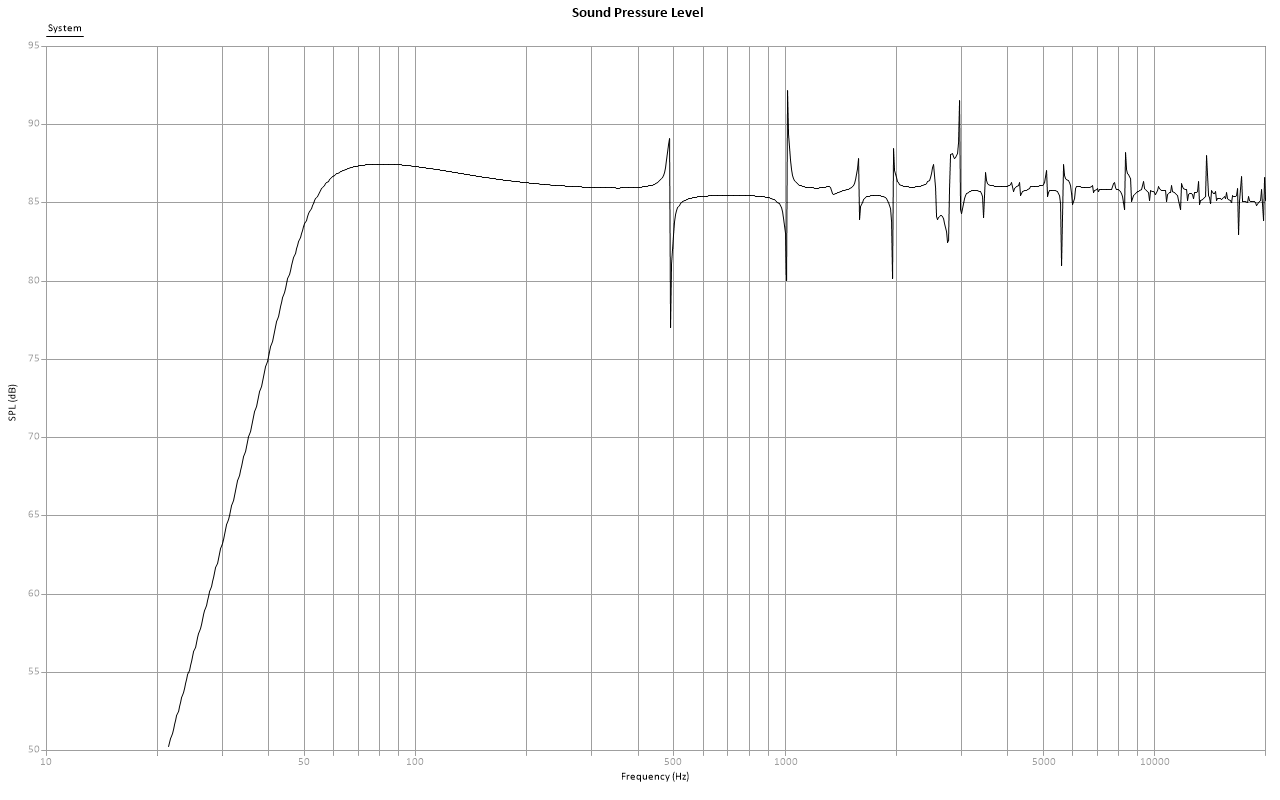
This is a 3D view of the box (hover the mouse over the image to see through):
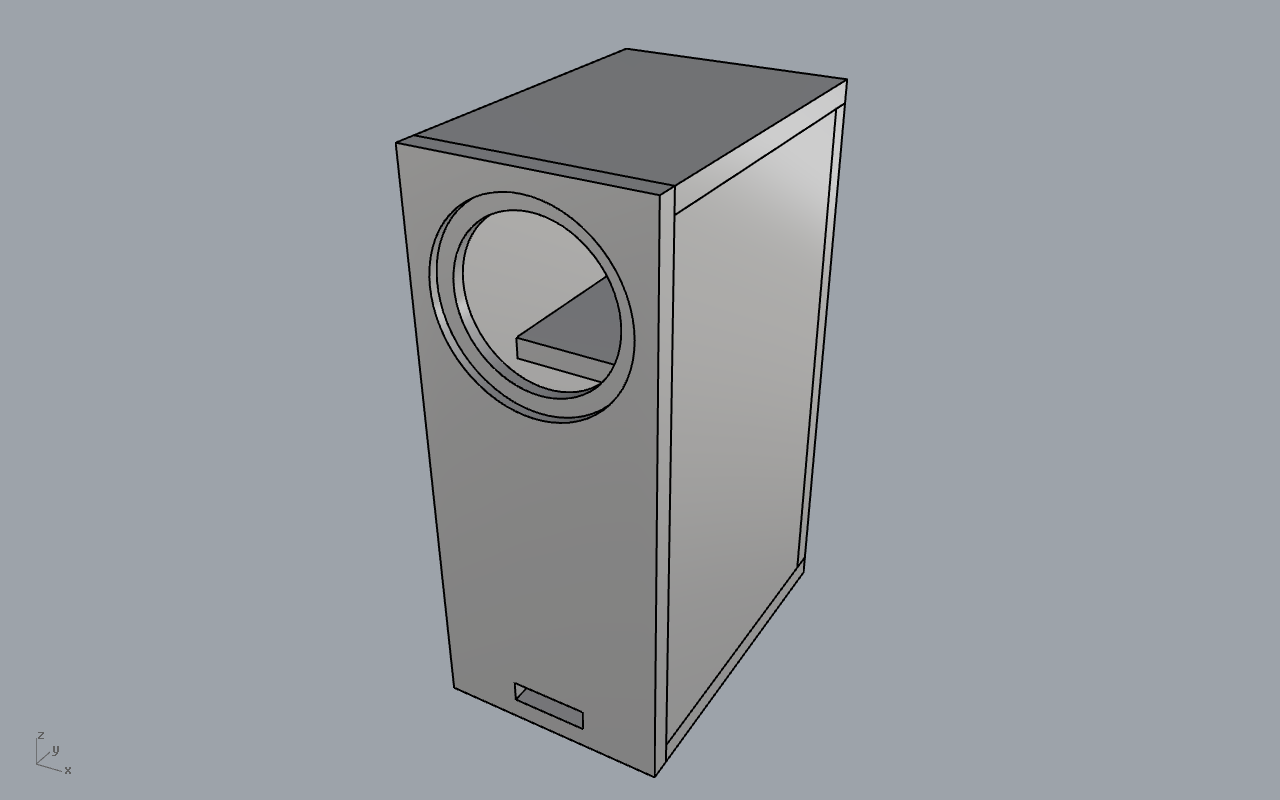
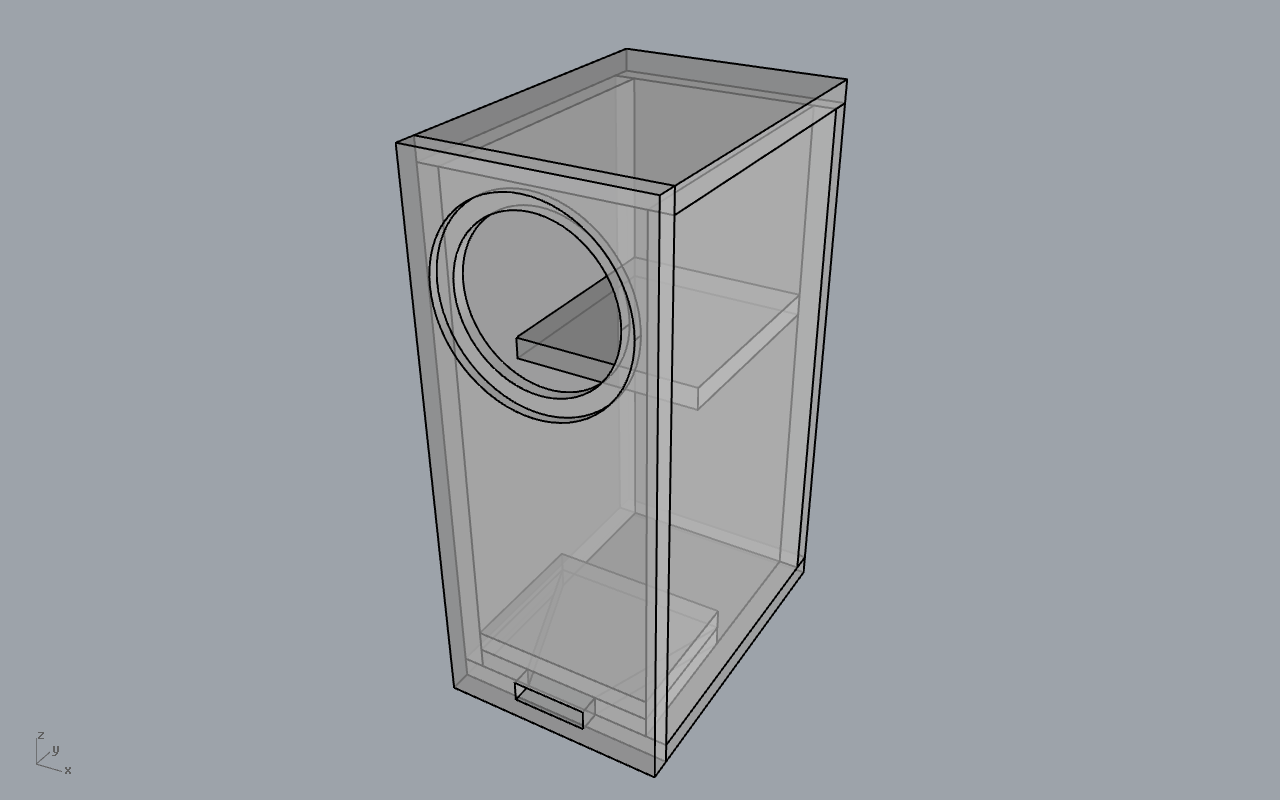
Here is a technical isometric view:
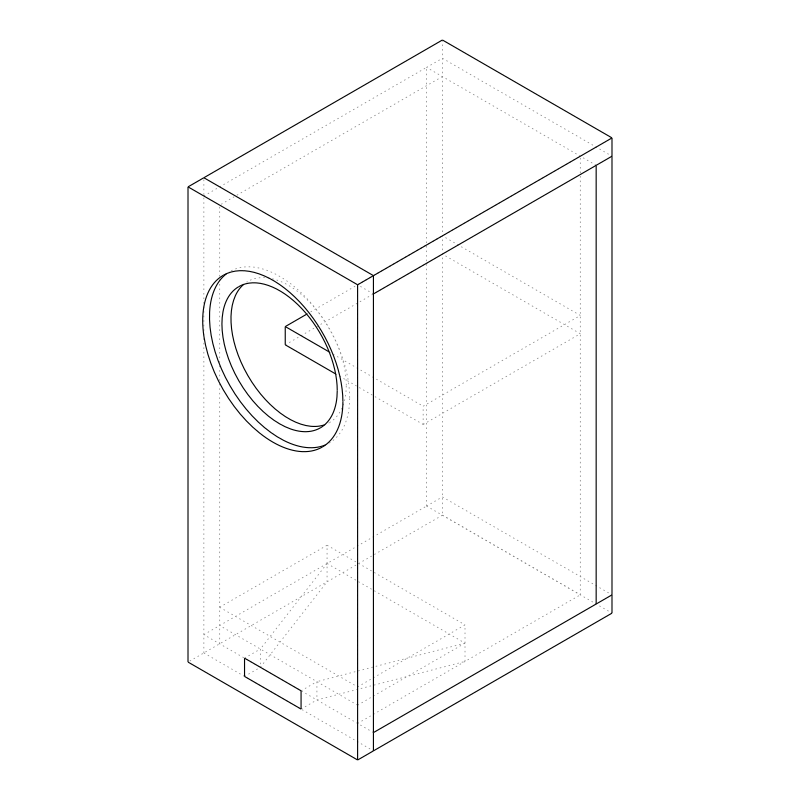
And these are the resulting plans:
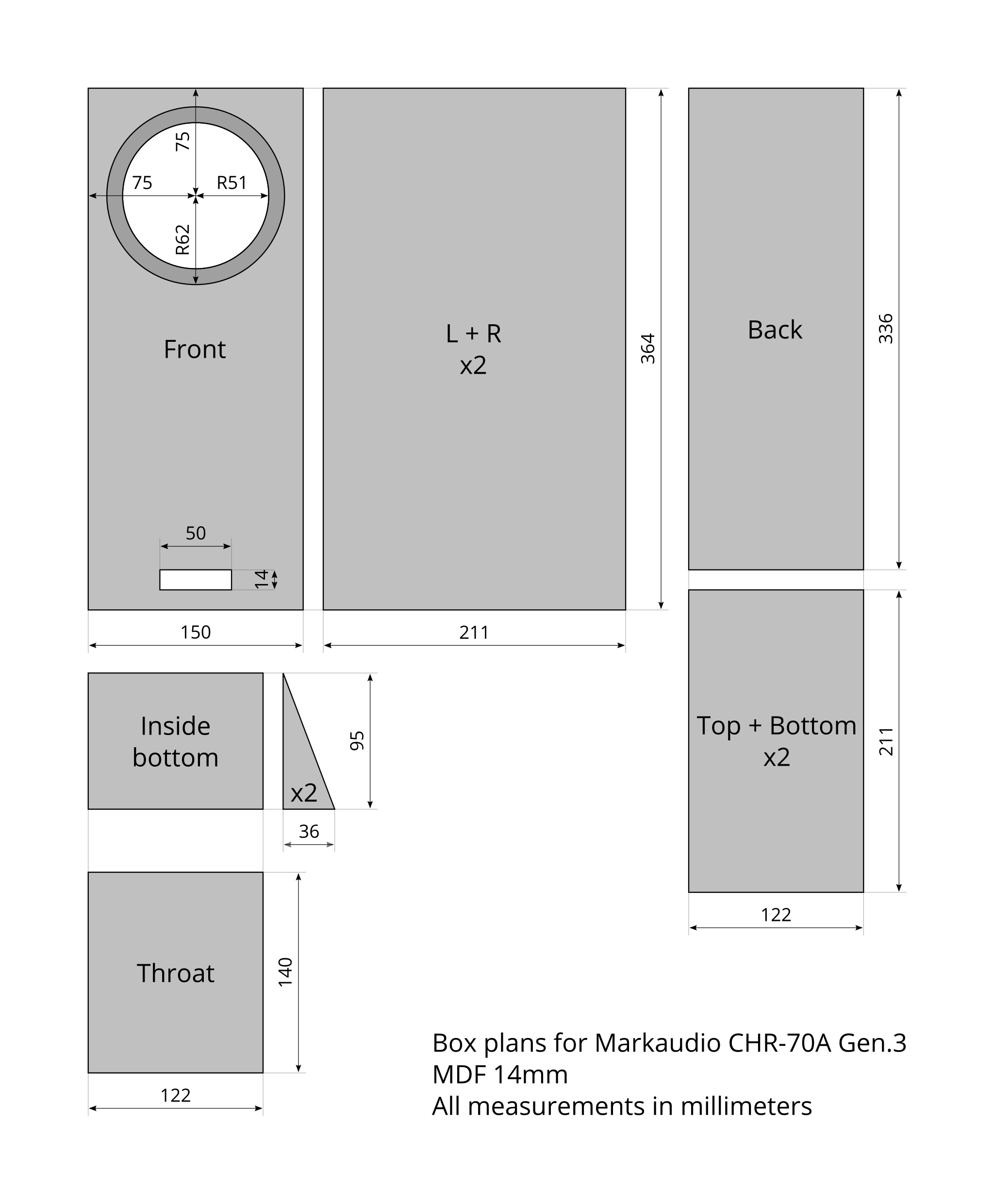
I use them on my desktop powered by a Temple Audio Bantam Gold and I am very satisfied with the results so far considering that I was using a classic 2.0 multimedia system for PC (exactly a Hercules XPS 2.0 60 multimedia system).
After some burn in of both the stereo amplifier and the drivers I measured their SPL with a MiniDSP UMIK-1 operating with the REW software. You can see the graph right here:
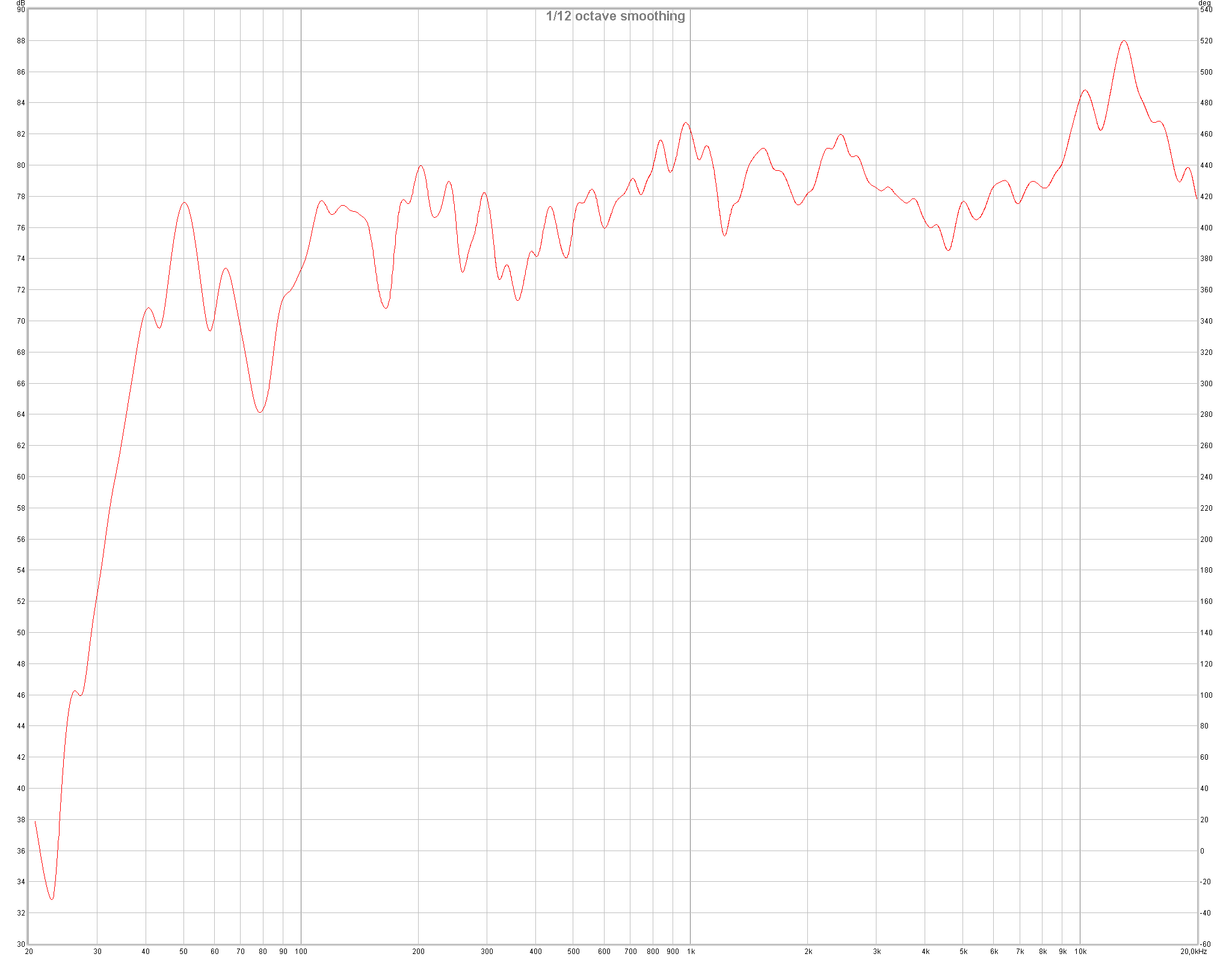
It is not the flattest SPL I’ve seen but it’s from a 35 euros raw driver in a box.